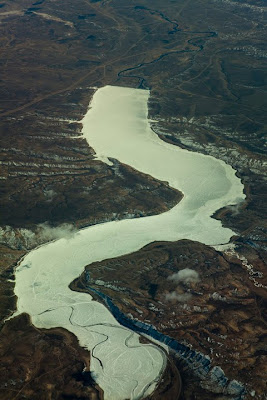This exercise asks us to produce 6 photographs to demonstrate real and implied triangles. Firstly we are required to shoot a triangular subject and then two perspective triangles, one pointing up and one pointing down.
My first is a triangular subject which I found in the form of a monument to the Korean War in Washington DC. The soldiers depicted are in an open triangular formation leading away from the viewer and although this isn't a solid triangle I felt it was more interesting than many other examples that I had to hand. Perspective has helped to create the depth of the triangle but it is not required to create the shape itself.
My triangle pointing up is the Reflecting Pool to the Washington memorial in Washington DC. The shape of the pool creates a perspective triangle which is nicely completed by the needle shape of the Washington memorial in the distance.
My triangle pointing down is the vaulted roof of Grand Central station in New York. At first it was hard to work out just how to create an inverted perspective triangle since most of the time they occur looking away to the horizon or up at a building. I just had to work out that to get the reverse I would have to be looking down a tall building or at retreating parallels that were above the horizon to get a down pointing triangle.
For the implied triangle portion of the exercise we were asked to shoot 5 or 6 objects that create a triangle shape as a still life.
My triangle with the apex at the top is made of a pile of weights that sit on an old fashioned set of scales. The frame of the scales nicely frame the weights with their reflection in the pan coming to a convenient point.
Six screws provide the triangle apex down and I was able to reproduce the triangle twice with both the tips and bases of the screws giving rise to the shape.
The final part of the exercise was to photograph 3 people so that they formed a triangle.
These 3 guys who form part of a metal band were kind enough to pose for me and their relative heights gave rise to the triangle of faces, helped by my shooting from above their eye level. For inspiration I thought of the work of the English photographer Mick Rock who photographed many of the most famous bands in the 70's including Pink Floyd, Ziggy Stardust and Queen whose iconic photograph for Bohemian Rhapsody used high lighting and a black background to isolate and emphasise the musicians faces. Mick is still very active after three decades and recently photographed REM, the Foo Fighters and the Motley Crew.


















































